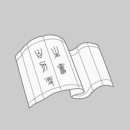
计算机专业英语吴丽君9787301212950北京大学出版社2012-10-01
本店都是销售的正版二手书图书,正版八成新左右,少许笔记(笔迹),介意者慎拍,发(申通,中通,圆通,韵达,极兔,邮政快递),本店全国多仓发货,不支持选择快递(每个仓库合作的快递不一样)发货速度快,择优发货,欢迎您的光临,祝你购物愉快。
¥ 6 1.8折 ¥ 34 八品
库存4件
作者吴丽君
出版社北京大学出版社
ISBN9787301212950
出版时间2012-10
装帧其他
开本其他
定价34元
货号9787301212950
上书时间2024-08-25
- 最新上架
商品详情
- 品相描述:八品
- 商品描述
-
目录
Chapter 1 Introduction to Computers
1.1 The history of computers
1.2 Hardware concepts and its development
1.2.1 Hardware concepts
1.2.2 Development of computing hardware
1.3 Development of software
1.3.1 The first generation
1.3.2 The second generation
1.3.3 The third generation
1.3.4 The fourth generation
1.4 Reading material: Steve Jobs
Chapter 2 Operating Systems
2.1 The history of operating systems
2.2 The operating system functions
2.2.1 Starting up computers
2.2.2 Loading applications
2.2.3 Controlling of I/O operations
2.2.4 Memory management
2.2.5 File management
2.2.6 Command interpretation
2.3 Modem operating systems
2.3.1 UNIX
2.3.2 Windows XP
2.3.3 Vista
2.3.4 Linux
2.4 Reading material: Windows 7 now available to all
Chapter 3 Programming Languages.
3.1 Concepts of programming languages
3.2 The history of programming languages
3.3 Components of programming languages
3.3.1 Variables and data types
3.3.2 Constants and literals
3.3.3 Comments
3.3.4 Procedures
3.3.5 Functions
3.4 Reading material: Where C# fits in
Chapter 4 Programming
Fundamentals
4.1 The organization of programming languages
4. l. 1 Programming language factors
4.1.2 Programming language abstractions
4.1.3 Computer language types
4.2 The programming statements
4.3 Object-Oriented programming
4.3.1 Object
4.3.2 Class
4.3.3 Inheritances
4.3.4 Encapsulations
4.3.5 Messages
4.4 Reading material: Java language
Chapter 5 Data Structures and
Algorithms
5.1 Data structures
5.1.i Stacks
5.1.2 Queues
5.1.3 Trees
5.1.4 Array
5.1.5 List
5.2 The concept of an algorithm
5.2.1 The formal definition of an algorithm
5.2.2 The abstract nature of algorithms
5.3 Algorithm representation
5.3.1 Primitives
5.3.2 Pseudo code
5.4 Common algorithms
5.4.1 Recursion
5.4.2 Sorting
5.4.3 Searching
5.5 Reading material: Sorting algorithm
Chapter 6 Software Engineering
6. l The history of software engineering
6.2 Software design fundamentals
6.2.1 Stepwise refinement
6.2.2 Abstraction
6.2.3 Software architecture
6.2.4 Data structure
6.2.5 Program structure and modularity
6.2.6 Software procedure
6.2.7 Information hiding
6.2.8 Design representation
6.3 Traditional design methodology
6.4 Modern design methodologies
6.4.1 Object oriented technology
6.4.2 Prototyping
6.5 Tools of modeling
6.5.1 Dataflow diagram
6.5.2 Data dictionary
6.5.3 Unified modeling language
6.6 Reading material: Software
development process
Chapter 7 Database Systems
7.1 The history of databases
7.2 The concepts of databases
7.2.1 The relational mode
7.2.2 The Structured Query Language (SQL)
7.2.3 ACID properties
7.3 Database design
7.3.1 The definitions and concepts
7.3.2 Database normalization
7.4 Database warehousing
7.4.1 Dimensional design
7.4.2 Data warehouse design considerations
7.5 Data mining
7.6 Reading material: Database management
Chapter 8 Networking and the Internet
8.1 The networking fundamentals
8.1.1 Network topology
8.1.2 Interface timing
8.1.3 Line configuration
8.1.4 Data interfaces
8.1.5 Network application paradigms
8.2 The World Wide Web
8.2.1 Web implementation
8.2.2 HTML
8.3 The application of the Internet
8.4 Reading material: Network firewalls
Chapter 9 Computer Graphics and Images
9.1 The fields of computer imagery
9.1.1 Graphics
9.1.2 Image processing
9.1.3 Computer vision
9.2 Steps of image processing operations
9.3 Graphics software
9.3.1 Desktop publishing
9.3.2 Electronic publishing (CD-ROMs and the Internet)
9.4 Animation
9.4.1 Flash
9.4.2 3ds Max
9.5 Reading material: Digital photography
Chapter 10 Electronic Commerce
10.1 An introduction to electronic commerce
10.1.1 The difference between traditional business and E-Commerce
10.1.2 The types of E-Commerce
10.1.3 Benefits of E-Commerce
10.2 Electronic payment system
10.2.1 Electronic bank
10.2.2 Electronic funds transfer
10.2.3 Credit cards and smart cards
10.3 E-Commerce security
10.4 Reading material: The criminal incentive
Chapter 11 Artifi Intelligence
11.1 An introduction to artifi intelligence
11.2 The goals of artifi intelligence
11.2.1 Acting humanly
11.2.2 Thinking humanly
11.2.3 Thinking rationally
11.2.4 Acting rationally
11.3 The research subjects of AI
11.3.1 Solutions to hard problems
11.3.2 Automatic translation
11.3.3 Intelligent control and intelligent management
11.3.4 Intelligent decision-making
11.3.5 Intelligent simulation
11.3.6 Machine learning
11.4 Expert system
11.5 Reading material: Genetic algorithm
Chapter 12 Multimedia
12.1 Elements of Multimedia
12.1.1 Text
12.1.2 Audio sound
12.1.3 Static graphics images
12.1.4 Animation
12.2 Multimedia technologies
12.3 Multimedia networking
12.4 Applications of multimedia
12.4.1 Multimedia in business
12.4.2 Multimedia in schools
12.4.3 Multimedia at home
12.4.4 Multimedia in public places
12.4.5 Entertainment
12.4.6 Virtual reality
12.5 Reading material: Microblogging
参考文献
内容摘要
本书以计算机科学文章为主,介绍了计算机技术各方面的内容,包括计算机硬件、软件、网络与通信、多媒体技术、计算机应用等内容。
本书旨在使计算机类专业学生能够熟悉并掌握计算机专业相关的基本专业英语词汇,熟悉科技英语的基本规律,并提高在计算机专业英语文献方面的阅读能力。
相关推荐
-

计算机专业英语 吴丽君 9787301212950
九品北京
¥ 25.00
-

正版现货新书 计算机专业英语 9787301212950 吴丽君
全新北京
¥ 26.33
-

计算机专业英语吴丽君北京大学出版社
全新北京
¥ 24.40
-

计算机专业英语 大中专理科专业英语 吴丽君
全新北京
¥ 25.80
-

计算机专业英语吴丽君 著作北京大学出版社
全新北京
¥ 24.40
-

计算机专业英语吴丽君北京大学出版社9787301212950
八五品重庆
¥ 4.00
-

计算机专业英语吴丽君北京大学出版社9787301212950
八五品成都
¥ 4.30
-

计算机专业英语 吴丽君 北京大学出版社9787301212950
八五品成都
¥ 5.30
-

计算机专业英语吴丽君 北京大学出版社9787301212950
八品济南
¥ 1.37
-

计算机专业英语 吴丽君 北京大学出版社9787301212950
八五品合肥
¥ 10.70
— 没有更多了 —













以下为对购买帮助不大的评价